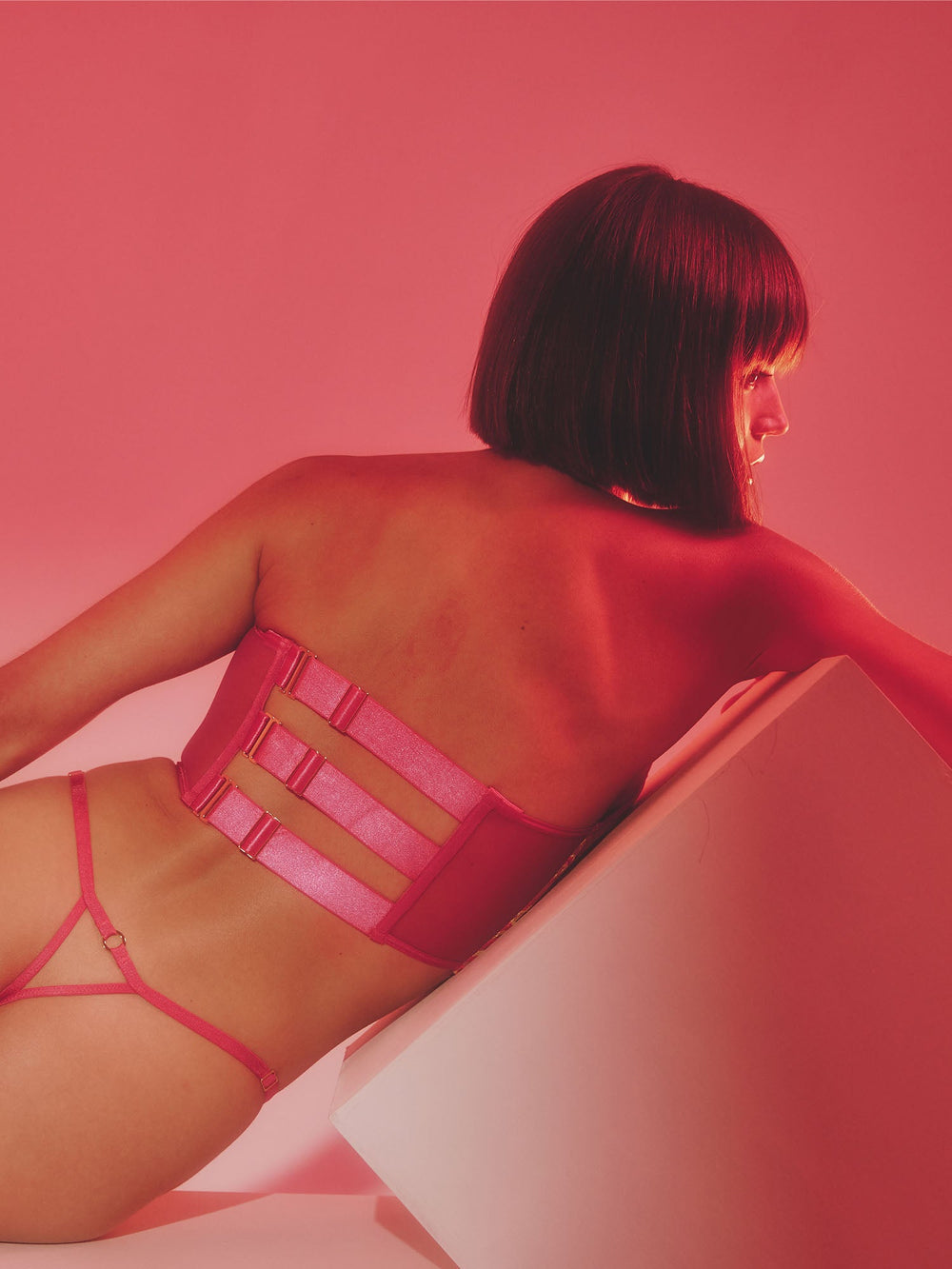Bra History
The modern bra as we know it was patented in 1914 by Mary Phelps Jacob (later known as Caresse Crosby). Frustrated with the stiff corsets of the time, she stitched together two silk handkerchiefs and some ribbon to create a lightweight, supportive undergarment that allowed more freedom of movement. She patented her “Backless Brassiere” in the U.S., marking the start of bras replacing corsets in everyday wear.
But bras weren’t invented overnight. Earlier versions of breast support date back centuries:
- In ancient Greece, women wore a bandeau-like garment called an apodesmos.
- In the Middle Ages, linen “breast bags” (early stitched cups) have been found in Austrian castles.
- By the 19th century, corsets dominated Western fashion, shaping the waist and supporting the bust.
Mary Phelps Jacob’s invention marked the turning point: the corset’s reign ended, and bras evolved into the foundation of modern lingerie.
The first patented bra was created in 1914, when American socialite Mary Phelps Jacob (later Caresse Crosby) stitched two silk handkerchiefs and pink ribbon into a lightweight support garment. She patented it as the “Backless Brassiere,” making it the first officially recognised bra design.
But the idea of bra-like garments existed long before:
- Ancient Greece (c. 4th century BC): women bound their chests with fabric bands called apodesmos for support.
- Middle Ages: Archaeologists uncovered 15th-century linen “bras” in Austria, showing stitched cups and straps similar to modern bras.
- Late 19th century: some corset makers experimented with separate bust-support devices, paving the way for the bra.
So while 1914 marks the start of the modern bra industry, the concept of breast support garments stretches back thousands of years.
Before bras became mainstream in the 20th century, women relied on a mix of corsets, bandeaus, and breast-binding garments depending on the era and culture.
Ancient Greece (4th century BC): women wrapped fabric bands called apodesmos or strophion around the bust for support.
Ancient Rome: similar chest bands, called mamillare, were worn both for support and sometimes to flatten the bust.
Middle Ages: long chemises (linen underdresses) were worn directly under gowns, sometimes layered with tightly laced bodices for shaping. In 2012, archaeologists discovered 15th-century linen bras in Austria, with stitched cups and straps that look surprisingly modern.
16th–19th centuries: the corset dominated European fashion, cinching the waist while shaping and supporting the bust. Corsets could be stiffened with whalebone, metal, or cording, and they defined women’s fashion silhouettes for centuries.
By the late 19th century, lighter corset covers and bust bodices started to appear, bridging the gap between rigid corsets and the more flexible bras that emerged in the early 1900s.
Corsets were the dominant foundation garment in Europe and North America for hundreds of years, shaping both waist and bust. But their decline began in the early 20th century, when lifestyles changed and women demanded more freedom of movement.
1900s–1910s: Designers like Paul Poiret rejected corsets in favour of looser silhouettes. At the same time, new inventions like the 1914 “Backless Brassiere” offered lightweight alternatives.
World War I (1914–1918): Corsets were discouraged to save metal (used for boning), and bras became more practical.
1920s: The flapper era favoured boyish silhouettes — women wore bandeau bras or camisoles rather than corsets.
1930s–40s: Bras became standardised, with cup sizing (A–D) introduced in 1932 by Warner Brothers.
1950s: Corsets lingered in the form of girdles, but bras were firmly the norm.
Today: Corsets are still worn, but as fashion or statement pieces — not as everyday undergarments.
So while corsets never fully disappeared, they evolved from daily necessity to occasional fashion statement by the mid-20th century.
The history of the bra stretches from ancient times to modern lingerie boutiques — a story of changing fashion, culture, and technology.
Ancient Civilisations: In Greece and Rome, women used fabric bands (apodesmos, strophion, mamillare) to support or flatten the bust.
Middle Ages: Women wore long linen chemises under gowns. Some 15th-century finds in Austria even included linen bras with cups and straps — surprisingly modern in design.
16th–19th centuries: The corset dominated Western fashion, shaping waist and bust with whalebone or steel. It was both a support garment and a status symbol.
Early 1900s: The corset began to fade. In 1914, Mary Phelps Jacob patented the “Backless Brassiere,” widely considered the first modern bra.
1920s: Flapper fashion embraced bandeau bras that flattened the chest for a boyish look.
1930s–40s: The bra industry standardised cup sizing (A–D), added adjustable straps, and mass-produced bras.
1950s: The “bullet bra” (pointed cups) became iconic, influenced by Dior’s New Look.
1960s–70s: Second-wave feminism challenged restrictive bras; braless dressing became a statement.
1980s–90s: Lingerie-as-fashion rose — Madonna’s cone bra, Victoria’s Secret angels, and the rise of lace push-ups.
2000s–today: Bralettes, sports bras, wireless bras, and lingerie-as-outerwear all reflect today’s diverse lifestyles and aesthetics.
For most of history, lingerie (and its predecessors) was about practicality: shaping the body, protecting outer clothes, or meeting modesty standards. But the shift to lingerie as a fashion statement began in the late 19th and early 20th centuries.
Late 1800s: With the rise of the department store and the spread of ready-to-wear clothing, lingerie began to be marketed not just as hidden utility, but as something elegant. Silks and laces became popular in chemises, drawers, and camisoles.
1920s: The flapper era embraced lighter undergarments — silk slips, camisoles, and bandeaus — which felt glamorous compared to heavy corsets.
1940s–50s: Lingerie ads sold bras, girdles, and slips as part of a woman’s allure. The “bullet bra” and Dior’s New Look made structured lingerie fashionable in itself.
1960s–70s: Feminist critiques challenged bras, but simultaneously, lingerie-as-fashion became part of youth culture, with colourful nylon slips and playful matching sets.
1980s–90s: Lingerie went public: Madonna’s cone bra, Gianni Versace’s bondage-inspired collections, and Victoria’s Secret fashion shows brought lingerie into mainstream pop culture.
Today: Lingerie is both functional and fashionable. Bralettes, embroidered tulles, and designer briefs are often styled as outerwear, reflecting personal style as much as utility.


